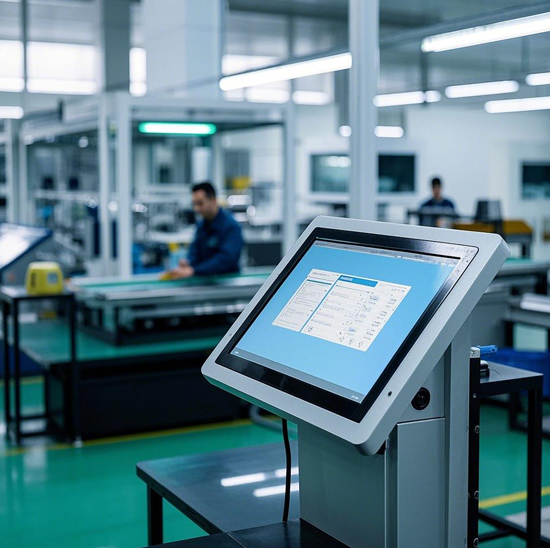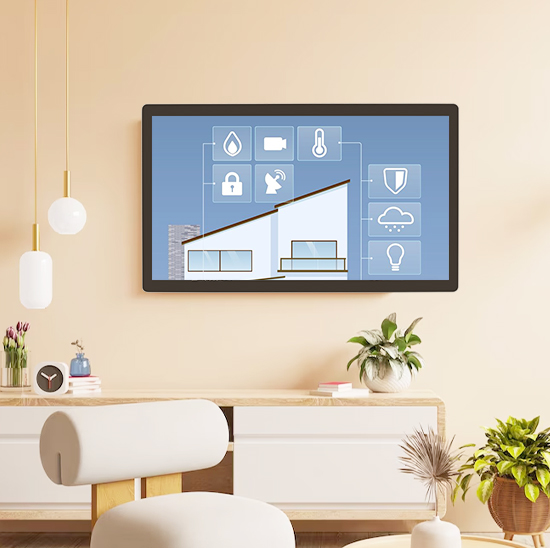For any driver, clear visibility of the Car Dashboard Touch Screen is non-negotiable—it’s the hub for navigation, music, and vehicle controls, and glare can turn it into a useless (or even dangerous) distraction. Whether you’re driving into the morning sun, dealing with harsh afternoon light, or facing oncoming headlights at night, standard touch screens often reflect light, forcing you to squint, look away from the road, or adjust your position to see clearly. This is where anti-glare Car Dashboard Touch Screens come in: designed to minimize reflections and maintain visibility in all lighting conditions, they turn a frustrating pain point into a seamless driving experience. This guide will break down how anti-glare technology works, what to look for when choosing a screen, and how to keep it performing at its best—helping you prioritize safety without sacrificing connectivity.

How Anti-Glare Technology Works for Car Dashboard Touch Screens
Anti-glare Car Dashboard Touch Screens don’t just “reduce shine”—they use specialized design and materials to tackle reflections at the source. Here’s the science behind it:
1. Core Anti-Glare Coatings
The most common (and effective) solution is a matte anti-reflective (AR) coating applied to the screen’s surface. Unlike glossy screens that bounce light directly back at the driver, this coating:
Breaks up incoming light rays instead of reflecting them uniformly, scattering glare so it’s less noticeable.
Reduces “specular reflection” (the harsh, mirror-like shine from direct sunlight or headlights) while preserving screen clarity—so you can still read text and see icons clearly.
Some premium screens add a second layer of oleophobic coating (oil-resistant) on top of the AR layer, which repels fingerprints (another common cause of reduced visibility, as smudges catch and reflect light).
2. Screen Structure and Light Absorption
Beyond coatings, the physical design of the Car Dashboard Touch Screen plays a role:
Diffused backlighting: Instead of bright, direct backlights that amplify glare, anti-glare screens use diffused LEDs that spread light evenly across the display. This reduces contrast between the screen and ambient light, making reflections less prominent.
Low-reflectivity substrates: The base layer of the screen (under the touch sensor) is made with materials that absorb, rather than reflect, incoming light. This prevents light from bouncing off internal layers and creating “ghost” reflections on the surface.
3. Adaptive Brightness (A Complementary Feature)
Most anti-glare Car Dashboard Touch Screens pair with adaptive brightness sensors—a must for all-day usability:
The sensor detects ambient light levels (e.g., bright sun vs. dim dusk) and automatically adjusts the screen’s brightness. For example, it cranks up brightness on sunny days to cut through glare, then dims at night to avoid overwhelming your eyes (and clashing with headlights).
Some advanced models even adjust color temperature (warmer tones at night, cooler tones during the day) to match natural light, reducing eye strain and improving visibility further.
Key Factors to Choose the Right Anti-Glare Car Dashboard Touch Screen
Not all anti-glare screens are created equal—here’s how to pick one that fits your vehicle and driving habits:
1. Glare Reduction Performance (Test for Real-World Conditions)
Don’t just rely on marketing claims—look for measurable specs or real-world testing:
Reflection rate: Aim for a screen with a reflection rate of 5% or lower (standard glossy screens often have rates of 20%+). This means only 5% of incoming light is reflected back, vs. 20%+ for non-anti-glare models.
Viewing angle: Anti-glare screens should maintain visibility even when you’re not looking straight at them (e.g., if you’re a taller driver or adjust your seat position). Look for “wide viewing angles” (170°+ horizontal/vertical) to avoid color shifting or dimming when viewed off-center.
2. Compatibility with Your Vehicle
The Car Dashboard Touch Screen needs to fit your vehicle’s dashboard and work with its systems:
Size and fit: Measure your current dashboard opening (or check your vehicle’s specs) to ensure the screen fits—aftermarket anti-glare screens come in common sizes (7”, 9”, 10.25”) for most cars, while OEM (factory) screens are tailored to specific makes/models (e.g., Toyota, Ford, BMW).
Vehicle integration: If you’re upgrading, confirm the screen works with your car’s wiring, steering wheel controls, and built-in features (e.g., backup camera, climate control). Some screens require adapters to sync with proprietary vehicle systems—ask the supplier for compatibility details.
3. Durability and Daily Use
Your Car Dashboard Touch Screen takes daily wear and tear—anti-glare models need to be tough too:
Scratch resistance: The matte AR coating shouldn’t scratch easily. Look for screens with a Mohs hardness rating of 6H or higher (resistant to keys, phone cases, or accidental scrapes).
Temperature tolerance: Car dashboards get hot (up to 70°C in summer) and cold (down to -10°C in winter). Ensure the screen is rated to operate in this range—otherwise, the anti-glare coating may peel or the screen may malfunction.
How to Maintain Your Anti-Glare Car Dashboard Touch Screen
To keep your screen’s anti-glare properties intact and avoid damage, follow these simple maintenance steps:
1. Clean It Properly (Avoid Ruining the Coating)
The matte AR coating is delicate—skip harsh cleaners or rough cloths:
Use a microfiber cloth (dry or slightly dampened with distilled water) to wipe away dust and fingerprints. Microfiber is soft and won’t scratch the coating.
For stubborn smudges (e.g., coffee spills), use a small amount of isopropyl alcohol (70%) on the cloth—never spray liquid directly on the screen (it can seep into the edges and damage internal components).
Avoid glass cleaners with ammonia, vinegar, or abrasives—these break down the anti-glare coating over time, making the screen more reflective.
2. Protect It from Extreme Conditions
Park in shade when possible: Prolonged exposure to direct sunlight can fade the anti-glare coating and overheat the screen. If you can’t park in shade, use a dashboard cover to block UV rays.
Avoid sharp objects near the screen: Keep keys, pens, or phone chargers away from the dashboard—even a small scratch can ruin the anti-glare layer in that spot, creating a focal point for glare.
FAQs About Anti-Glare Car Dashboard Touch Screens
Q1: Are anti-glare Car Dashboard Touch Screens darker than regular glossy screens?
A1: No—quality anti-glare screens maintain the same brightness and clarity as glossy models, but without the glare. The matte coating scatters light, not the screen’s own display, so you won’t lose visibility of icons or text.
Q2: Can I add an anti-glare film to my existing (non-anti-glare) Car Dashboard Touch Screen?
A2: Yes—aftermarket anti-glare films are available, but they’re a temporary fix. They often reduce touch sensitivity slightly, and the matte finish may make the screen look “fuzzy” compared to a built-in anti-glare screen. For long-term use, a dedicated anti-glare screen is better.
Q3: Do anti-glare Car Dashboard Touch Screens work at night (with oncoming headlights)?
A3: Absolutely—they’re designed for both day and night. The anti-glare coating reduces reflections from headlights, while adaptive brightness dims the screen to avoid overwhelming your night vision. This makes it easier to use navigation or change music without being blinded.
Q4: How long does the anti-glare coating last on a Car Dashboard Touch Screen?
A4: With proper maintenance (avoiding harsh cleaners and scratches), the coating should last 5–7 years (the typical lifespan of the screen itself). If the coating starts to peel or fade earlier, it’s likely due to poor quality or improper care.
An anti-glare Car Dashboard Touch Screen isn’t just a “nice-to-have”—it’s a safety upgrade that eliminates distractions and keeps you focused on the road, no matter the lighting. By understanding how anti-glare technology works, choosing a screen that fits your vehicle, and maintaining it properly, you can enjoy clear visibility and seamless control on every drive.
If you’re unsure which anti-glare Car Dashboard Touch Screen fits your vehicle (e.g., need help with OEM vs. aftermarket options, want to compare reflection rates for your climate), fill out the form on our website. Our automotive tech team will analyze your car’s make/model, driving habits (e.g., frequent daytime vs. night driving), and budget to recommend a tailored solution—helping you drive safer and more comfortably.



